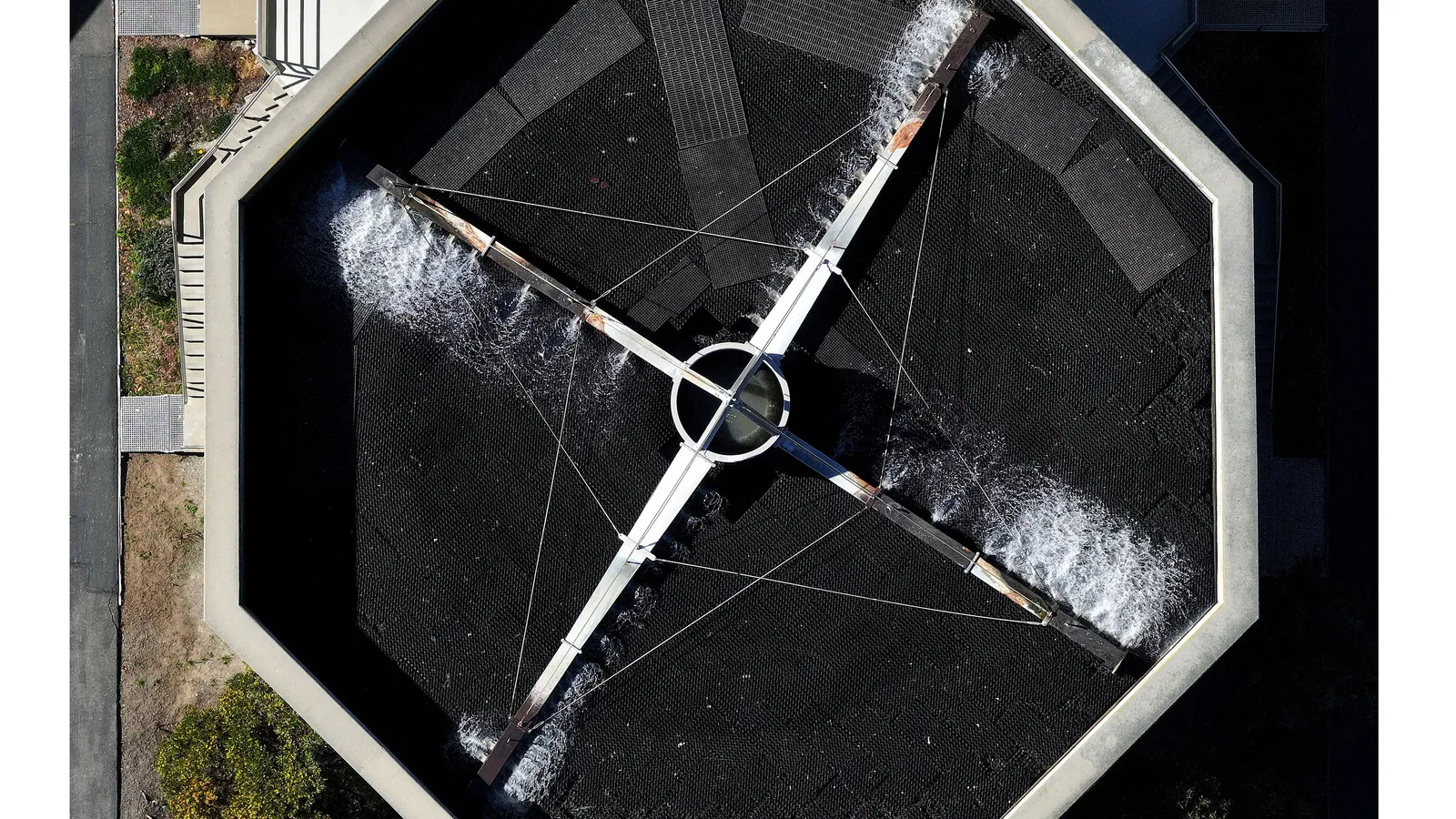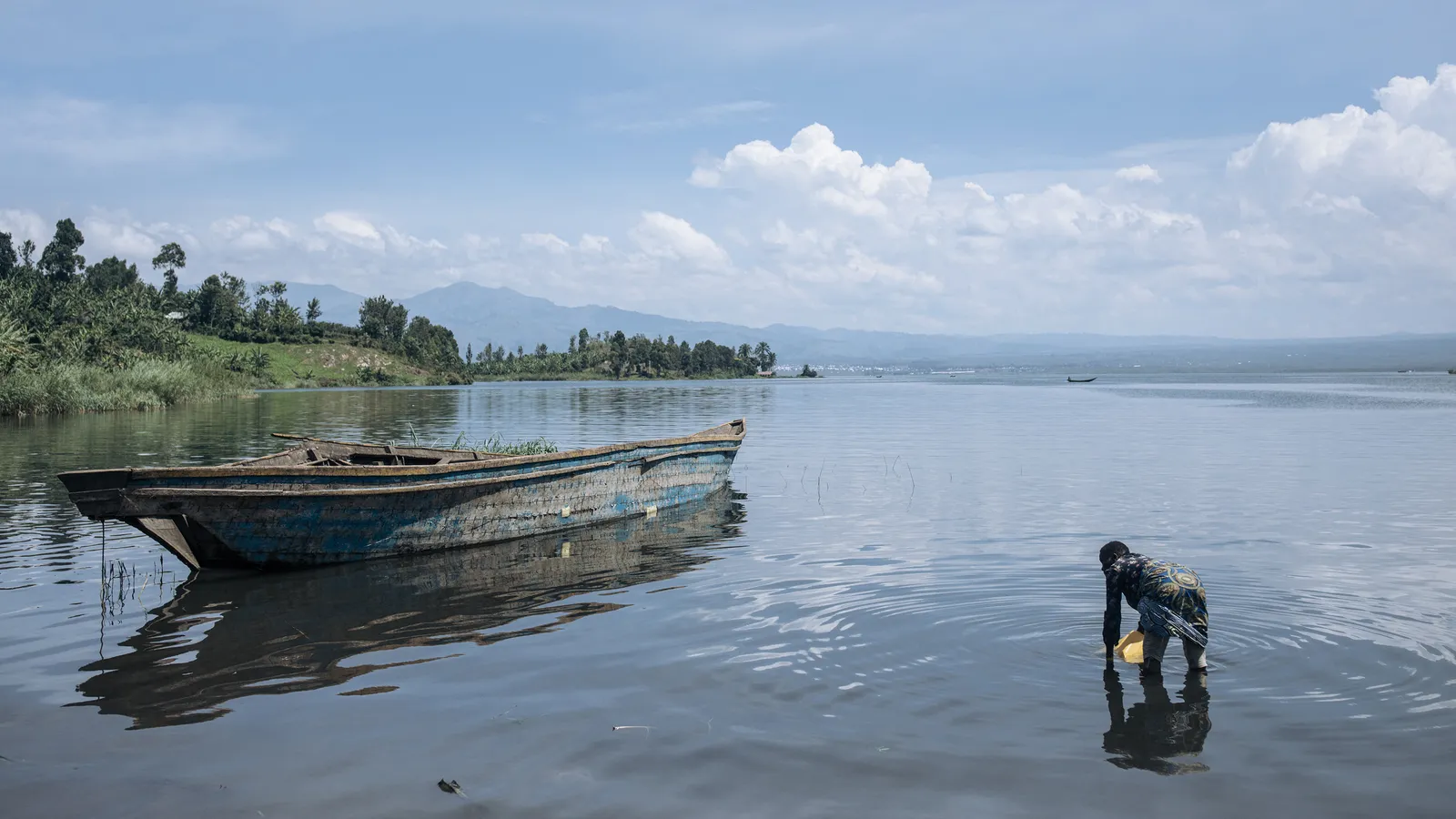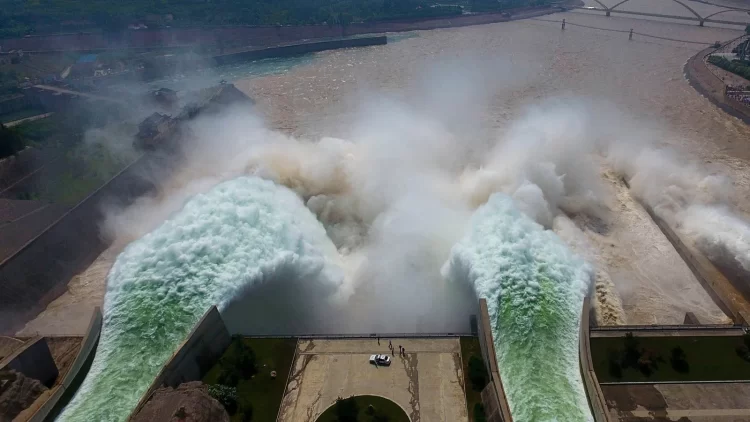Dams and reservoirs around the world are an underappreciated source of methane. Now start-ups want to capture that gas as a source of power.
It takes just one second for four Olympic-sized swimming pools-worth of water to charge through the turbines at the Tucuruí dam in northern Brazil. The rush of water here at one of the largest hydroelectric reservoirs in the Amazon region is deafening, but it’s what makes the dam the fifth largest power plant in the world.
As the water churns through a series of 25 turbines and spillways of the dam, however, something else is happening – it’s emitting greenhouse gases.
Often regarded as one of the oldest forms of renewable energy, hydroelectric dams and their reservoirs are responsible for the release the equivalent of almost one billion tonnes of carbon dioxide into the atmosphere (with much of these greenhouse gas emissions in the form of methane) as water approaches and then tumbles its way through the turbines that generate electricity. Methane is a greenhouse gas that’s more than 80 times more potent than carbon dioxide over a 20-year lifespan, but it also breaks down faster in the atmosphere than CO2.
These hidden emissions mean that hydroelectricity is perhaps not as clean as it first seems.
The reason is that it’s not just water passing through the turbines – a lot of dissolved greenhouse gases flow through them too. Just as carbon dioxide dissolves in our fizzy water while under pressure, so too does methane gas dissolve in large bodies of water under certain conditions.
Now imagine you’re holding a bottle of sparkling water. Before opening it, you don’t see any bubbles inside because the carbon dioxide gas stays dissolved. As you open the lid, you hear a fizzing sound as the pressure is released and bubbles of carbon dioxide rise up. Shake that water first, and this effervescent “degassing” will most probably make your carbonated drink explode everywhere.
Something similar happens to the methane dissolved in the water from lakes when it is churned.

Out of the 51 billion tonnes of greenhouse gases emitted by people every year, three billion tonnes of those are from methane which escapes from water. When water is disturbed, methane comes out of the solution and turns into bubbles of gas. And one of the single biggest sources of this degassing methane is something of a surprise – hydroelectric dams like Tucuruí.
But there are now hopes it may be possible to catch this methane before it escapes into the atmosphere, and put it to use as a source of power.
While reducing fossil fuel use is part of the solution (40% of methane emissions come from the energy sector (i.e. oil and gas), methane comes from many other sources too, including livestock: 32% comes from burping and farting ruminants like cows. (Read more on the hunt for the hidden sources of methane.)
Less well known still is the significant contribution of water bodies to these emissions. Methane is also produced in sediments of freshwater when carbon-rich organic matter is decomposed by microbes in the absence of oxygen – that includes naturally occurring tropical swamps, peat bogs and waterlogged soils. With all these natural sources, their status as a source or sink of greenhouse gases such as methane can be a tightrope depending on land-use practices and climate change.
Then there are the manmade water sources of methane, including wastewater treatment plants and rice cultivations. In all these sources, bacteria are responsible for breaking down organic matter and releasing methane.
And then, of course, there’s dams and their reservoirs. Reservoirs contribute 22 million tonnes of methane per year – a little less than two-thirds of the methane produced by rice production or wastewater treatment (35 million tonnes each). The methane comes from decomposing organic matter at the bottom of the water body. In reservoirs as in sewage plants, when that water is churned up, it escapes.
Potential power source
Inside a 20-foot-long (6m) rust-red container at Cranfield University, water tumbles down through a series of pipes and containers under gravity. Here, Louise Parlons Bentata, chief executive and co-founder of Bluemethane, is developing tech that captures methane from bodies of water such as reservoirs and sewage treatment plants. Methane is the primary component of fossil natural gas, and it can be burned as an energy resource.
Parlons Bentata hopes her technology can capture bubbles of methane as they move up to the surface, funnelling it off to be collected for use as a non-fossil source of biogas.
Commercialisation of the Bluemethane technology is being put to the test at United Utilities, a water company in the north-west of the UK: “Wastewater companies are already using anaerobic digestion, they take solid waste and churn it around without oxygen to create methane biogas, and at the end the liquid still has quite a lot of dissolved methane in it,” she says. “They already have biogas generators and use energy for power, so we’re not changing anything dramatic.”
This modular patent-pending tech could therefore be easy to install within existing infrastructure, enabling industries producing high organic load, such as sewage treatment plants, breweries and pulp manufacturers, to create more energy on-site while cutting emissions. And instead of water being actively pumped, Parlons Bentata and her co-founder Nestor Rueda-Vallejo’s method lets gravity do the hard work.
“Low energy has been our primary design requirement,” says Parlons Bentata. “We want to remove the most methane using the least amount of energy.”
While UK water companies have committed to be operationally net zero by 2030, baseline methane emissions aren’t yet being widely measured. Parlons Bentata would like to see more funding for open-access satellites that can measure methane more accurately, which, she hopes, could unleash more global investment in methane removal tech. That’s essential because, despite being responsible for a third of global warming, methane only receives about 2% of climate financing.
Methane emissions from water bodies are especially under-studied, says Carole Helfter, an environmental physicist at the UK Centre for Ecology and Hydrology who studies methane emissions from open water. But that knowledge gap could be starting to close. “When you look at the scientific literature, information is trickling in and the picture is forming slowly but there’s a lot of uncertainty around the magnitude of methane emissions from water sources,” Helfter says.
The emerging picture suggests there might be more methane flowing out of the tap than previously thought. In February, a study released by Princeton University, US, reported that methane emissions from centralised wastewater treatment facilities are likely to be double the amount previously reported by the US Government’s Environmental Protection Agency.
According to Helfter, who is currently measuring aquatic methane emissions at three UK sites, the most accurate data comes from measuring emissions directly using micro-meteorological techniques such as eddy covariance, which calculates how much methane escapes directly from the water into the atmosphere. Sampling isn’t practical over vast areas though, so mathematical modelling is used to estimate emissions at regional and global scales. Cutting-edge methane satellite observations can help with this, but there are challenges: observations can be limited by how often a satellite passes over a certain region, and clouds get in the way, which is problematic especially over the UK and large parts of the tropics.
Plus, as Helfter explains, “just because there’s methane in the water, doesn’t mean it will escape into the atmosphere; it could stay dissolved”. But at hydroelectric dams, for example, the turbulence of the turbines – like shaking a bottle of fizzy water – triggers the release of methane gas bubbles.
Money, money, methane
“We shouldn’t just think of [dissolved methane] as a massive problem, but simply as a new resource,” says Parlons Bentata, who wants to create a value for this currently wasted gas.
It’s alarming. One of these lakes produces so much methane that the lake sometimes catches fire – Carole Helfter
As dams are one of the largest sources of methane from water, they could be a good place to start. The Bluemethane team is measuring methane in 20 hydropower reservoirs, from Brazil to Cameroon, to identify hotspots that could benefit most from methane-capture technology.

The opportunity to monetise methane capture could be big in countries like Brazil where hydropower is the major source of energy. Bluemethane is partnering with software platform Open Hydro that helps reservoirs like Tucuruí calculate their emissions and decarbonise freshwater systems. Their new framework, the Reservoir Methane Capture Mechanism, provides methane capture as a service to hydropower operators in Brazil. This means that hydropower operators can unlock investment and use methane capture to generate tangible financial incentives such as carbon credits without incurring risks associated with buying the new technology.
“We’re not just fast-tracking cleaner energy; we’re unlocking the true value of our most precious resource,” says Maria Ubierna, founder of Open Hydro, a firm that also analyses greenhouse gas emissions relating to reservoirs. Ubierna believes this approach can accelerate the green energy transition.
Once captured from water, methane can be used as a biogas for electricity generation or upgraded to “green” natural gas, which can be used for heating, electricity generation or fuel for vehicles. Alternatively, methane can be converted into hydrogen or used in fuel cells to produce electricity. At present, the vast majority of the world’s hydrogen is sourced from methane.
Using methane from hydropower for energy – such as by burning it or converting it to hydrogen – still releases carbon dioxide to the atmosphere, but no more than would eventually be released anyway by the organic matter decomposing at the bottom of reservoirs.
While methane capture from Africa’s Lake Kivu (see factbox: A Lake Full of Energy) is an extreme example, Helfter sees huge potential for Bluemethane’s tech to be rolled out in developing countries. She recently found “exceptionally high methane concentrations” in open lakes in Bangalore, India, that receive raw, untreated sewage from millions of people every day.
More like this:
The fuel that could transform shipping
The hunt for hidden methane emissions
How New Zealand is cutting emissions from livestock
While this is unusual, it should be a warning, she says. “It’s alarming. One of these lakes produces so much methane that the lake sometimes catches fire. But in places like this, if you can harvest these big amounts of methane, you can create power and reduce the fire risk too,” says Helfter.
As Helfter worries that the development of wastewater infrastructure in places such as India and Africa could be “completely outpaced by the rate of this urbanisation” so methane emissions could present a greater problem in the future if not dealt with properly.
Bostan …

